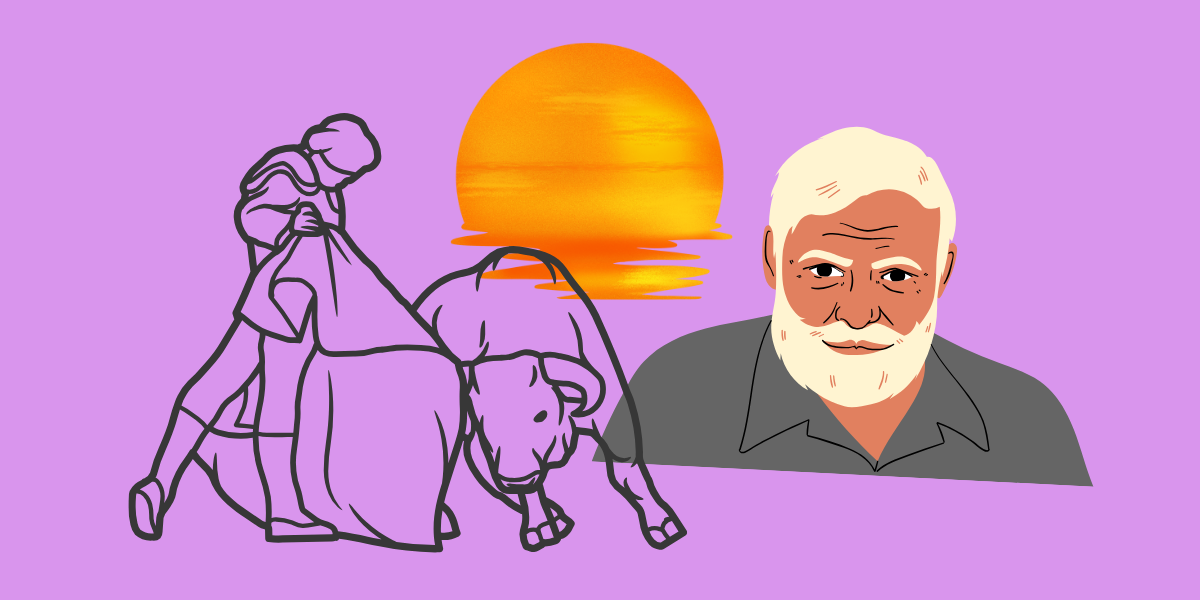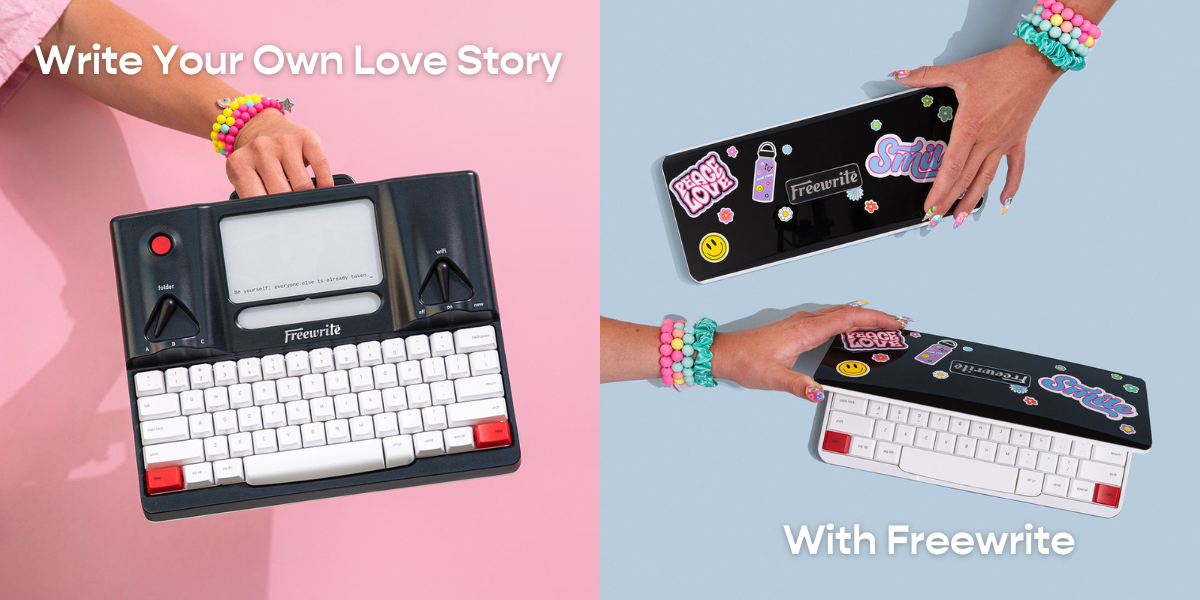As a lyricist, Taylor Swift has enthralled audiences worldwide. But did you know she’s also woven a subtle tapestry of literary references throughout her discography?
A lifelong reader, Swift often talks about the literary greats who have influenced her songwriting, as well as her childhood reading habits — she even admits to having written a 400-page book about her friends and family when she was a kid. That’s a girl after our own hearts.
(Though we are still trying to forgive that Tortured Poets Department line about typewriters.)
Whether you love her or hate her (we’re talking to you, dads, Brads, and Chads) you’ll be impressed with these hidden literary references in Swift’s songs…
Spoiler alert: There are a lot of spoilers for classic literature below. Don’t pretend you were going to read them.

1. Romeo & Juliet
Let’s start with the obvious. In her 2008 hit "Love Story," Swift draws upon the iconic tale of the Bard’s star-crossed lovers, weaving a modern-day romance that echoes the themes of forbidden love and familial strife.
The lyrics name Romeo and leave little to the imagination, which makes sense, because Swift was barely out of high school English classes herself at the time.
She even admitted to loving the story in an interview with Pandora Music, “except for the ending." So she gave Romeo and his love a new ending in the song.

2. The Great Gatsby
Allusions to F. Scott Fitzgerald’s seminal novel pop up in several Swift songs. The first, from her sixth album, Reputation, is an obvious one (“feeling so Gatsby”) in reference to hosting an extravagant party.
But the next reference, on 2020’s Evermore, shows her growth as a lyricist and takes a bit more unraveling. In the song “Happiness,” she sings:
“I hope she’ll be a beautiful fool.”
This is taken straight from the mouth of Gatsby character Daisy Buchanan, who expresses her dismay about her daughter’s prospects in life as a woman:
“I hope she’ll be a fool—that’s the best thing a girl can be in this world, a beautiful little fool.”
In that same song, Swift doubles down on her ode to Fitzgerald, referencing the symbolic green light in the novel.

3. Jane Eyre
Many sharp-eared listeners compared Swift’s imagery in “Invisible String” to a famous line in Charlotte Brontë’s Jane Eyre. In the classic, Mr. Rochester says to Jane:
“I sometimes have a queer feeling with regard to you—especially when you are near me, as now: it is as if I had a string somewhere under my left ribs, tightly and inextricably knotted to a similar string situated in the corresponding quarter of your little frame.”
Others have credited this as a reference to the red thread in Chinese proverbs, which is said to tie together those fated to meet. Wherever the imagery originated, it’s undoubtedly powerful.
There are further parallels between Swift’s lyrics and Jane Eyre, particularly in their depictions of the archetypal “mad woman.” Crucified by the media over the years for being “crazy,” Swift sings:
“Every time you call me crazy / I get more crazy.”
Much like Mr. Rochester’s first wife, who is deemed “mad” and imprisoned in the attic. In the novel, after Jane flees the estate, she sends letters back — only to later discover the house has burned down. Swift’s song “Evermore” contains a parallel image with the line:
“Writing letters addressed to the fire.”
Additionally, the way Swift breaks the fourth wall and addresses the listener in the title of her song “Dear Reader” is likely a reference to one of the most famous lines in English literature, straight from Jane Eyre:
“Reader, I married him.”

4. The Sun Also Rises
Among the myriad influences woven into her songs, the legacy of literary giant and Nobel laureate Ernest Hemingway emerges as a subtle yet significant thread.
Many people erroneously tie a line from Swift's song "The Last Great American Dynasty," in which a dog is dyed green, to Hemingway’s eccentric neighbor who famously dyed Hemingway’s cats. But it's Rebekah Harkness herself, the socialite at the center of Swift’s song, who committed her own crimes of pet-dyeing. (In real life, it was indeed a cat, not a dog.)
But there are real references to Hemingway’s work in Swift’s discography.
In “The 1,” Swift sings, “But it would've been fun / If you would've been the one.” This echoes Hemingway’s 1920s novel, The Sun Also Rises, which ends with this powerful scene:
"Oh Jake," Brett said, "We could have had such a damned good time together." ... The car slowed suddenly, pressing Brett against me. "Yes," I said. "Isn't it pretty to think so?"
Notice another parallel? That line from “Invisible String” comes up again: “Isn’t it just to pretty to think / All along there was some / Invisible string tying you to me.”

5. The Scarlet Letter
References to Nathaniel Hawthorne’s classic appear in both “New Romantics” and “Love Story.” In the first, Swift sings about showing off “our different scarlet letters” and in the latter, the narrator calls herself a scarlet letter.

6. A Tale of Two Cities
Early in “Getaway Car,” a Swiftie favorite from 2017’s Reputation, Swift puts a new spin on a world-famous literary opening line. The book says: “It was the best of times, it was the worst of times...”
Swift sings a similar line with a clever rhyming twist.

7. Peter Pan
J.M. Barrie’s classic gets a nod in Swift’s “Cardigan,” with Swift again expressing the desire to change the ending to a beloved and tragic literary masterpiece. This time around, it's the love story between Peter Pan and Wendy that Swift wishes to give a happier ending.

8. Rebecca
We love a creepy reference. And Taylor’s take on Rebecca is that. She even confirmed in a Rolling Stone interview that she had read Rebecca before writing her album Evermore.
Daphne Du Maurier’s 1938 classic follows a woman who marries a man still in love with his late wife, Rebecca. The plot twist? He killed his previous wife.
In Rebecca, the main character is inexperienced in comparison to her new husband and, like the narrator in Swift’s song “Tolerate It” she compares herself to a child in the relationship. In an interview with Apple Music, Swift admitted the story reminded her of how she’d felt in previous relationships.
In Swift’s song “No Body No Crime” on the same album, the way the husband is killed is strikingly familiar to readers of Rebecca. Swift speaks of a boating license while in Rebecca, the tragic character’s body is eventually found on a sunken boat.

9. The Secret Garden
Lyrics about escaping to secret gardens in her mind on the recent Swift album The Tortured Poets Department reference Frances Hodgson Burnett’s classic children’s book.
The lyrics go on to confirm this, saying:
“I read about it in a book when I was a precocious child.”

10. Emily Dickinson’s whole life
This one is spicy — and a favorite of Swift fans on the internet. Shortly after 2020’s Evermore released, Swift fans began to notice parallels to the life and writings of Emily Dickinson.
Not only did it seem to evoke the same 19th century morosity that Dickinson is known for, Evermore was also announced on December 10, Dickinson’s birthday.
One track in particular grabbed the imagination of Swifties everywhere: “Ivy.” The song is about a married woman having an affair with another individual. Dickinson is now commonly thought by scholars to have been in love with a woman named Sue Gilbert, her friend from childhood who also happened to be married to Dickinson’s brother.
The TV series Dickinson, about the poet’s life, even featured Swift's song in the credits after an important scene. And more recently, it’s been revealed that genealogists have found Swift to be distantly related to Dickinson.
But it’s a simple line that confirms the connection for most listeners. One of the poems Dickinson is said to have written for love of her sister-in-law, “One Sister have I in our house,” ends with this simple line:
"Sue - forevermore!"






















